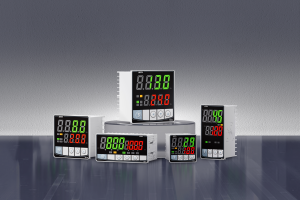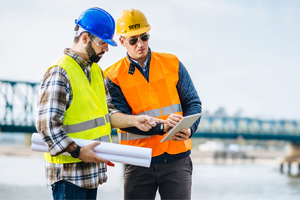What is a PID Controller? Understanding Its Components, Working, and Applications
Discover the fundamentals of PID controllers, their components, working principles, and applications in industrial automation. Learn how PID controllers provide precise and accurate control in various systems.
1.Introduction
PID controllers essential in various applications including temperature regulation, motor speed control and industrial process management due to their precise and accurate controls.
2.Components of PID Controller
A PID controller consists of three main parts, Proportional, Integral and Derivative. Each plays an essential part in controlling processes.
3.Proportional (P) Component
The proportional component identifies and responds to current errors between setpoint and process variable levels by providing immediate correction based on error magnitude. Proportional gain determines responsiveness; higher gains result in more aggressive correction while lower ones produce gradual results.
Integral (I) Component
The integral component takes into account cumulative error history to eliminate steady-state issues that the proportional component alone cannot manage. By gradually integrating error over time, this integral component ensures the system reaches and sustains its setpoint; however excessive integral action could potentially cause instability; so careful tuning must occur here as well.
4.Derivative (D) Component
The derivative component predicts future errors by considering their rate of change, thus helping mitigate overshoot and improving system stability. Its predictive action can reduce overshoot while increasing stability; derivative gain determines its extent. While derivative component can increase system performance, its sensitive to noise may require filtering or further investigation before its full potential can be realized.
5.Working Principle
PID controllers function through an iterative feedback loop mechanism. As it compares setpoint and process variable to calculate errors, the PID applies corrective actions through its proportional, integral and derivative components based on those errors.
1. mes Feedback Loop Mechanism: PID controllers work in an enclosed-loop system where output feeds back into input in order to form an endless cycle. mes Error Calculation: Error calculations involve measuring differences between setpoint and process variables as determined by error calculations.
3. Corrective Actions: The PID controller adjusts control variables to minimize error, so the system reaches and maintains its desired setpoint.
Applications
PID controllers can be applied across many fields due to their precision control capabilities, making them useful tools. Common examples of applications for these controllers are as follows.
PID controllers are increasingly being employed in temperature regulation systems such as HVAC (Heating, Ventilation and Air Conditioning), ovens and refrigeration units to keep temperatures within their desired range by adjusting heating or cooling elements accordingly.
Motor Speed Control
PID controllers provide effective motor speed regulation by matching electric motors' speeds to their setpoint values, an essential feature in industries where precise motor speeds are essential such as conveyor belts, robotics or CNC machines.
6.Industrial Process Management
PID controllers play an essential part in overseeing industrial processes like chemical reactions, fluid flow management and pressure regulation. Their purpose is to ensure these operations run efficiently within their specified parameters - increasing productivity while protecting safety at work.
Example of PID Controller in Action
A great practical example of PID control at work can be seen with vehicle cruise control systems, which use PID controls to maintain desired speeds by continuously adjusting throttle position to account for road conditions or vehicle load changes.
PID controllers bring many advantages that make them indispensable in automation and control systems, including:
1. Increased Automation: PID controllers enable automated process control, decreasing manual intervention while improving efficiency and increasing overall effectiveness. 2.
Reduced Human Error: By automating control tasks, PID controllers help eliminate human error and produce more consistent and reliable outcomes than their manual equivalents would ever could.
3. Precise and Accurate Control: PID controllers achieve precise and accurate control by using proportional, integral, and derivative actions to achieve precise yet accurate setpoint maintenance with minimum deviation from its desired setting point.
7.Conclusion
PID controllers are essential elements in industrial automation and process control applications, offering precise yet accurate proportional, integral, and derivative actions for precise control in various situations. As technology develops further their role is expected to increase further improving efficiency and productivity of automation/control systems.
- What is a PID Controller for Pellet Grill? Understanding Its Components, Benefits, and Applications
- How to Find (K_p), (K_i), and (K_d) in a PID Controller: A Comprehensive Guide























